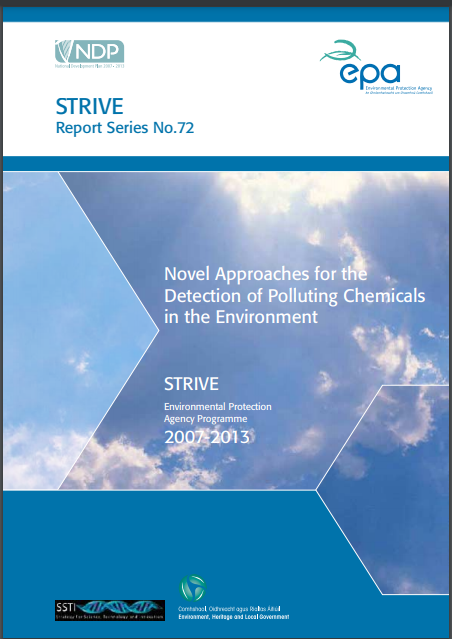Summary of Findings - Development of specific bacterial detoxification enzymes as bioindicators and biosensors of environmental pollution
Summary of Findings - STRIVE Report 72
Summary:
Summary of Findings - STRIVE Report 72
Published: 2011
ISBN: 978-1-84095-397-8
Pages: 3
Filesize: 424 KB
Format: pdf
Download
Background:
Persistent organic pollutants (POPs) are ubiquitous in our modern environment and pose significant human health risks. These compounds include polychlorinated biphenyls (PCBs) and many toxic chlorinated organic pesticides of concern as soil pollutants. Glutathione transferases (GSTs) are a family of enzymes that play an important role in detoxification of a wide range of compounds. The aim of this research project was to investigate bacterial GSTs (known and novel) with a view to their development as Bioindicators, Biosensors and potential Bioremediation agents of POPs in soil.
Key points:
- DNA sequences of a number of bacterial GSTs capable of degrading organic compounds were analyzed so as to identify highly conserved amino acids with a view to design primers for amplification of GSTs from the environment.
- A number of environmental soil/ sediment samples of interest as potential sources of bacteria capable of degrading chlorinated organic compounds were sourced, both nationally and internationally, and used for genomic DNA isolation.
- A number of bacterial GST sequences of interest (with increased activity towards pollutants) linked to a fluorescent tag were inserted into plant-associated bacteria. These modified bacteria were shown to be capable of colonising plants and have potential for the development of biosensors and for bioremediation of chlorinated organic compounds in the environment.
- A relatively simple and inexpensive method (using GC-MS) was developed for the analysis of soil/sediment samples contaminated with chlorinated organic compounds.
Other downloads now available:
Final Report STRIVE Report 72(high resolution for printing): Development of specific bacterial detoxification enzymes as bioindicators and biosensors of environmental pollution.
https://www.epa.ie/media/archive/research/research-thumbnails/strive-72.png
